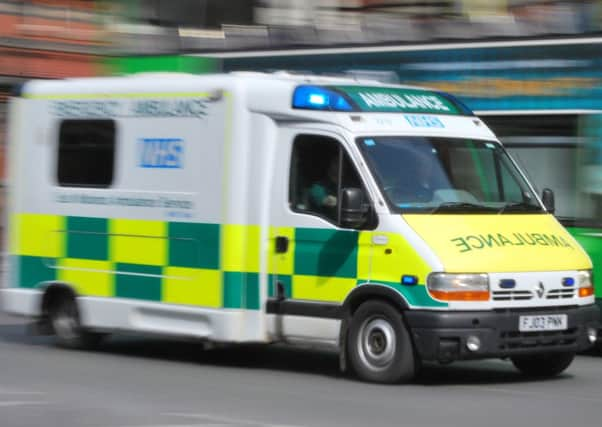Little boy’s ordeal waiting for ambulance


A REDUCTION in frontline paramedics, rise in reliance on medically unqualified staff and use of non-emergency vehicles have pinpointed for plunging into the region’s ambulance services into chaos - with patients paying the price.
Grandmother Sarah Rommell spoke out about her family’s ordeal, which took place last December, as The Yorkshire Post shed new light on poor response times at Yorkshire Ambulance NHS Trust (YAS).
Advertisement
Hide AdAdvertisement
Hide AdShe was forced to wait almost two hours to get her seven-year-old grandson Eden who has a neurological condition, to Hull Royal Infirmary when he fell and hit his head.
Miss Rommell, of Hedon, Hull, said: “If Eden has a bang to the head, he has to go to hospital. The operator knew that and knew his history, but we got a community first responder in a car. He called for a crew but the operator was telling him they couldn’t get one.
“We were in a state of panic. He needed an ambulance, only paramedics have the right medicines for his condition.
“When the trust finally sent for an ambulance, it came from 44 miles away in Scarborough. Meanwhile, the youngster continued to drift in and out of consciousness.
Advertisement
Hide AdAdvertisement
Hide Ad“It was unbelievable hearing the first responder having to fight to get Eden an ambulance, then they said it was going to have to come from Scarborough.
“At one point they were calling us and asking for directions to get there. I thought I’d have been better off calling a taxi and taking him myself, but I knew only paramedics had the right equipment to deal with him.
“From start to finish, it was about two hours between the call and getting him to hospital.”
Eden made a full recovery from the episode, but as the youngster is prone to fits, it has left her living in fear of another emergency.
Advertisement
Hide AdAdvertisement
Hide AdMiss Rommell said: “Eden is such a bright, bubbly lad who takes it all in his stride. For me, it’s frightening knowing that this is what our ambulance services have been reduced to.”
Stacey Rennard, campaigns manager at Epilepsy Action, said that if a person’s seizure lasts for longer than five minutes, or longer than is normal for that person’s seizures, it is a serious situation.
She said: “When this happens it is potentially a medical emergency and the seizure can become status epilepticus, which can lead to brain damage, or even death. In this instance it’s crucial that this help arrives as soon as possible. The longer a person’s seizure lasts, the less likely it is to stop on its own. Medicines need to be given as soon as possible to give the person the best chance of recovery.”
Unite regional organiser Les Muir said the story is just one example of how non-medical staff are being sent to incidents which should be dealt with by paramedics.
Advertisement
Hide AdAdvertisement
Hide AdThe ratio of medically-qualified and non-medical at YAS is now at an almost even level, according to the union, which continues to represent 450 trust employees despite being de-recognised by the organisation 18 months ago.
At last count, the number of emergency care assistants (ECAs), who drive vehicles and assist paramedics but cannot administer life-saving drugs, is now more than 800.
Mr Muir said: “In 2013, the trust imposed a five-year workforce plan to save money, with the introduction of the ECA role - they are cheaper to employ - a reduction in qualified staff, changes to shift patterns, the removal of crews being able to respond while on a meal break to save 85p and hour. Staff are now working 14 to 16-hour days.
“Unite was derecognised for refusing to agree to these changes, we told them they the changes were unsafe for the public and the staff.
“The truth is that we have not got enough qualified staff, hence the dependency on private ambulances and now using double ECA crews to respond to life threatening emergencies.”